Search the Special Collections and Archives Portal
Search Results

Panoramic view of Goldfield, Nevada, taken from the top of First National Bank: photographic print
Date
1900 (year uncertain) to 1910 (year uncertain)
Archival Collection
Description
From the Nevada Mining Photograph Collection (PH-00361).
Image
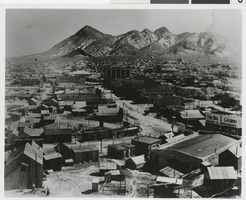
Photograph of Tonopah, Nevada, late 1800s
Date
1880 to 1899
Archival Collection
Description
Black and white photograph of Tonopah, Nevada, looking over the city, including the red light district.
Image
Pioche, Nevada, 1918-1960
Level of Description
Sub-Series
Scope and Contents
Materials contain photographs of Pioche, Nevada from 1918 to 1960, including photographs of schools, ranches, and buildings.
Archival Collection
Elbert Edwards Photograph Collection
To request this item in person:
Collection Number: PH-00214
Collection Name: Elbert Edwards Photograph Collection
Box/Folder: N/A
Collection Name: Elbert Edwards Photograph Collection
Box/Folder: N/A
Archival Component
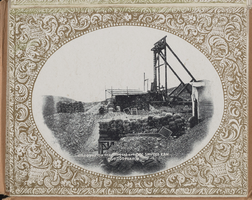
"Souvenir of Tonopah, Nevada" with photos from Goldfield, Tonopah, and Searchlight, Nevada: photograph album, image 028
Description
From the Nevada Mining Photograph Collection (PH-00361) -- Shown is a miniature photograph of Goldfield, Nevada. Written on the photograph, "Ore dump on the sandstorm ore shipped ran $60,000 per. town".
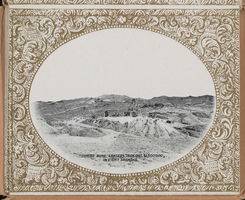
"Souvenir of Tonopah, Nevada" with photos from Goldfield, Tonopah, and Searchlight, Nevada: photograph album, image 030
Description
From the Nevada Mining Photograph Collection (PH-00361) -- Shown is a miniature photograph of Goldfield, Nevada. Written on the photograph, "Jumbo Mine. Leasers took out $1,500,000 in eight months".
Elmer R. Rusco Collection on Ethnicity and Race in Nevada
Identifier
MS-00196
Abstract
The Elmer R. Rusco Collection on Ethnicity and Race in Nevada (1964-1972) contains correspondence, court cases, employment information, and research materials compiled by Rusco for a book he was writing on race relations in Nevada.
Archival Collection
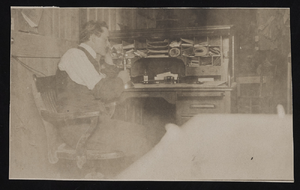
Frank Benham in his private office at the post office, Goldfield, Nevada: photographic print
Date
1905
Archival Collection
Description
From the Frank Benham Photograph Collection on Goldfield, Nevada (PH-00288). Written on the back of image: "Assistant Postmaster F.H. Benham in his private office. Goldfield Nevada. 1905".
Image
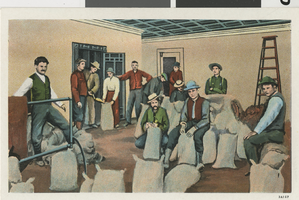
Goldfield, Nevada, twelve men: postcard
Date
1950 (year approximate) to 1977 (year approximate)
Archival Collection
Description
Postcard from Goldfield, Nevada depicting a painting of twelve men with bags filled with an unidentified substance.
Image
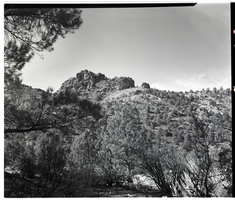
Film transparency of the Beaver Dam area near Carp, Nevada, November, 1954
Date
1954-11
Archival Collection
Description
Beaver Dam area east of Carp, Nevada. Carp, Nevada is an unincorporated community in Lincoln County, Nevada, United States located 35 miles (56 km) south of Caliente. It sits on the Meadow Valley Wash, which empties into Lake Mead. Carp was originally a small railroad station for the Union Pacific Railroad. The post office started under the name of "Carpsdale" on June 29, 1918, but was rescinded. It then officially opened under the name of "Cliffdale" June 7, 1921 and changed yet again to "Carp" December 1, 1925. The Carp post office remained open to serve rural ranches until July 1, 1974, when it closed permanently. Little remains of Carp today except a railroad siding usually occupied by idling trains, and the remains of the watering reservoir.
Image
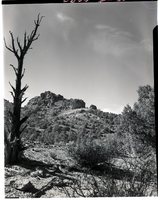
Film transparency of the Beaver Dam area near Carp, Nevada, November, 1954
Date
1954-11
Archival Collection
Description
Beaver Dam area east of Carp, Nevada. Carp, Nevada is an unincorporated community in Lincoln County, Nevada, United States located 35 miles (56 km) south of Caliente. It sits on the Meadow Valley Wash, which empties into Lake Mead. Carp was originally a small railroad station for the Union Pacific Railroad. The post office started under the name of "Carpsdale" on June 29, 1918, but was rescinded. It then officially opened under the name of "Cliffdale" June 7, 1921 and changed yet again to "Carp" December 1, 1925. The Carp post office remained open to serve rural ranches until July 1, 1974, when it closed permanently. Little remains of Carp today except a railroad siding usually occupied by idling trains, and the remains of the watering reservoir.
Image
Pagination
Refine my results
Content Type
Creator or Contributor
Subject
Archival Collection
Digital Project
Resource Type
Year
Material Type
Place
Language
Records Classification
